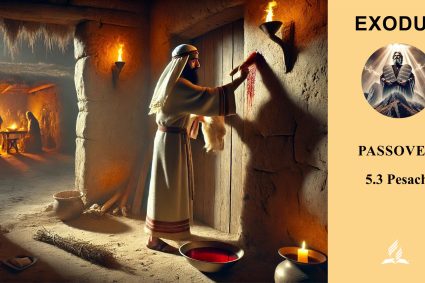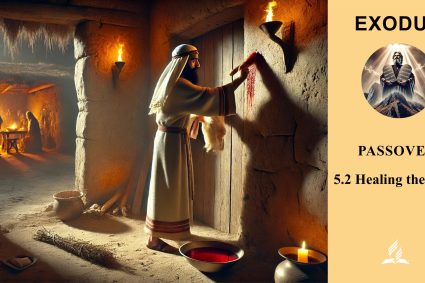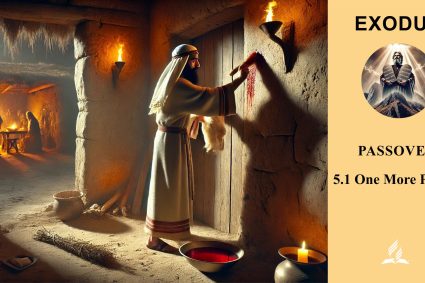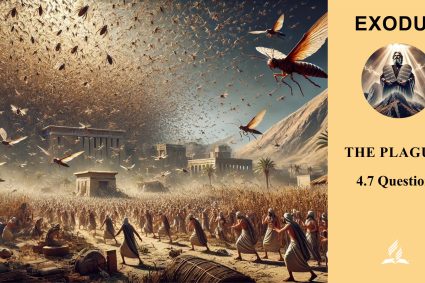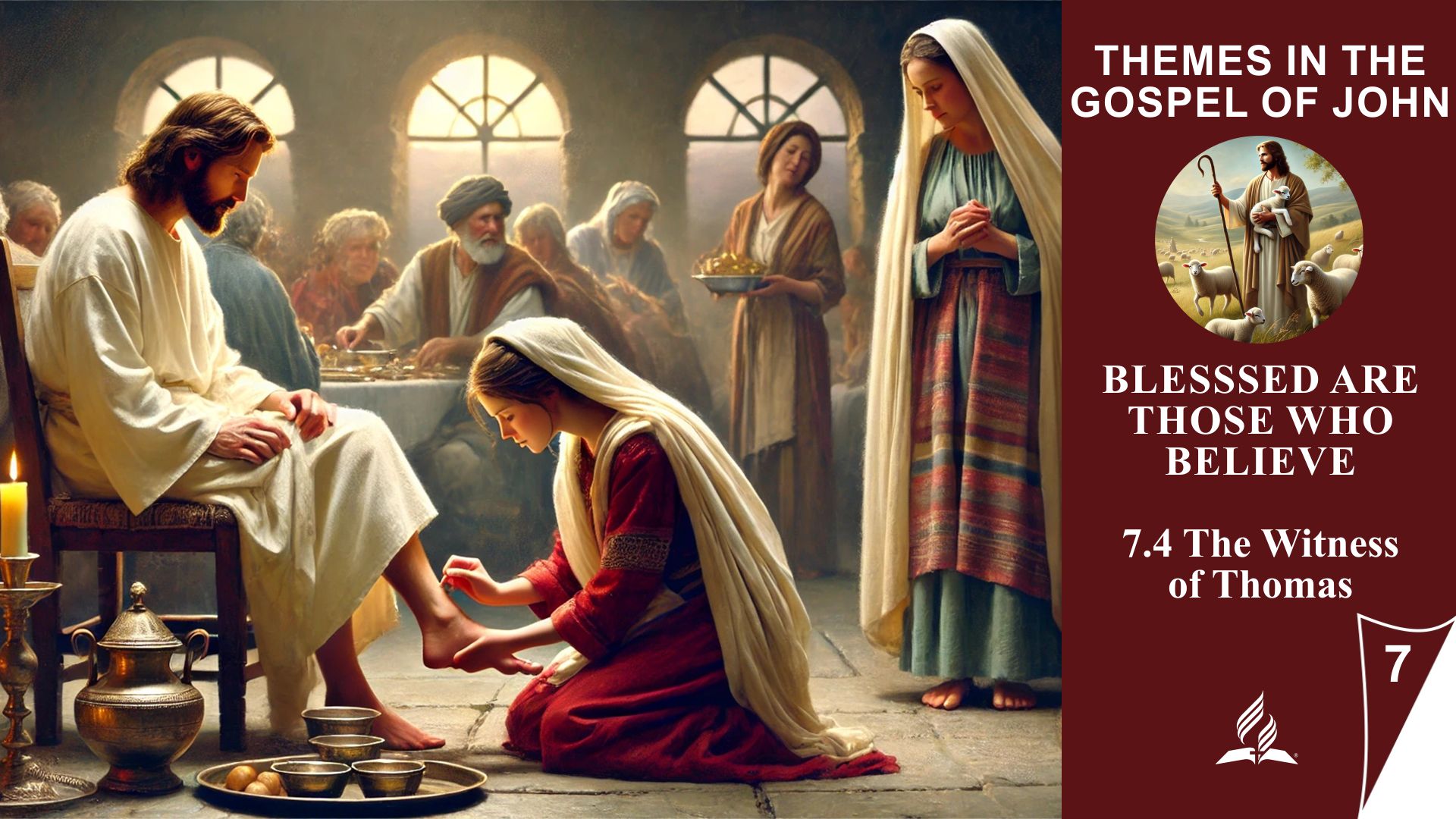

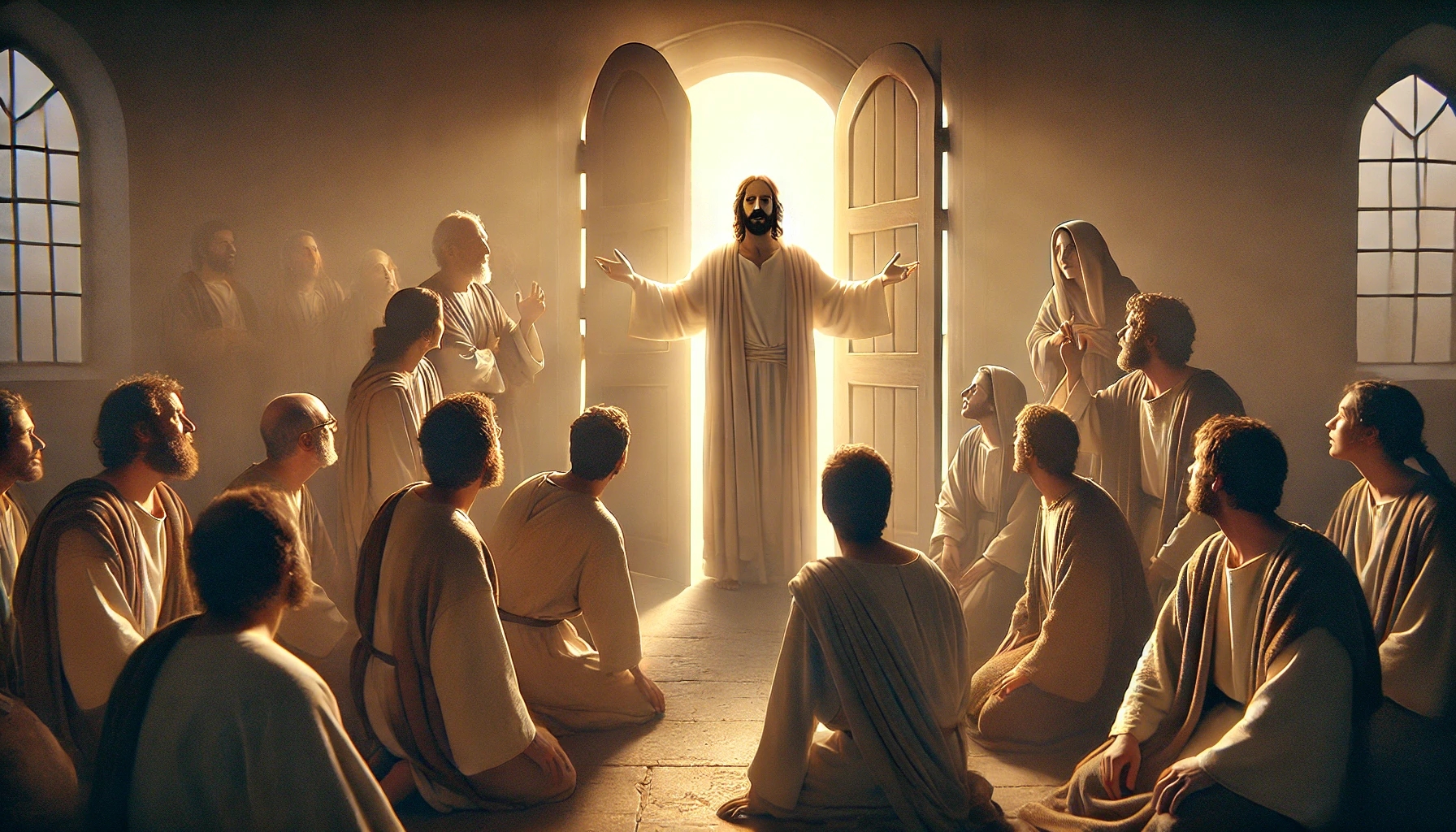
7.4 The Witness of Thomas
From Doubt to Confession of Faith – Thomas’ Lesson
Read John 20:19–31. What can we learn from the story of Thomas about faith and doubt? What major mistake did Thomas make?
The story of Thomas teaches us a crucial lesson about faith and doubt. Thomas’ “see-it-and-then-believe” attitude reveals a temptation familiar to many of us: the desire for visible evidence and the tendency to place conditions on our faith. However, this type of faith relies on assurances that remove the need for true trust.
Thomas made the mistake of tying his faith to visible signs instead of trusting his friends’ testimony and believing that Jesus had risen. When Jesus actually appeared to him and allowed him to see and touch His wounds, Thomas was convinced. But Jesus responded, “Blessed are those who have not seen and yet have believed” (John 20:29). This statement shows that genuine faith means trusting even when we do not have all the answers or evidence before us.
Our faith should be based on what we know and have experienced about God—through the Bible, creation, and personal experiences—and not on constantly seeking new signs and proofs. God has given us enough testimonies of His love and faithfulness to nurture our faith. He also leaves room for trust because true faith can be a step into the unknown that deepens our relationship with Him.
Thomas’ story reminds us that faith is more than just seeing and that we are invited to stand in trust of what God has already shown us. Doubt is human and often part of the faith journey, but ultimately Jesus calls us to a faith that endures even uncertainties.
If someone asked you, “Why do you believe in Jesus?”, how would you respond?
I believe in Jesus because He is, for me, the perfect revelation of love, truth, and hope. His teachings and His life possess a depth and wisdom that transcend time and culture. Jesus offers a relationship that is not based on performance but on unconditional acceptance and grace—something I believe every person deeply seeks within themselves.
His sacrifice on the cross and His resurrection are, to me, the greatest signs of His love and His power over what limits us—even death. These events have changed world history and demonstrate that forgiveness, healing, and new beginnings are possible no matter where we stand.
Additionally, I personally experience His peace and presence in my life. He provides me with support and perspective, especially in times of uncertainty. Through Jesus, I have the assurance that I am not alone and that my life and the world hold deeper meaning and hope.
Jesus is more than a historical figure or a concept to me; He is a living, experiential God who accompanies me on a path of love, growth, and faith.
Thomas’ story and his journey from doubt to faith have a deep connection to our everyday lives and our own faith. Many of us experience times of doubt where we, like Thomas, seek evidence for our faith or place conditions on it. Doubt is a natural part of life and the faith journey and can help us seek answers and a deeper understanding. However, Thomas teaches us that true faith often grows when we do not have everything in front of us and still trust.
In daily life, this means that we can learn not to base our trust on external signs or constant confirmation but to build on what we have recognized through God’s Word, our life experiences, and His work in creation. God has given us numerous “signs” of His faithfulness and love—moments of peace, answered prayers, people who stand by us in difficult times, and much more. These are like “anchor points” of our faith that help us hold on even during phases of doubt and turbulent times.
Thomas’ story also reminds us that Jesus understands our doubts and meets us in our search for certainty. Thomas’ encounter with the risen Jesus ultimately led him to a profound confession of faith: “My Lord and my God!” (John 20:28). Similarly, Jesus meets us when we are ready to approach Him in trust. In our daily lives, we can bring our questions and doubts before God because He encourages us to trust Him despite our uncertainties.
The invitation, “Blessed are those who have not seen and yet have believed” (John 20:29), is a call to a mature, enduring faith that sustains us in times of life when we have no visible answers. This kind of faith, which lives without conditions, gives us deep inner security and a relationship with God that endures even in dark times. Thus, Thomas teaches us that true faith is not about knowing everything but trusting what we have already experienced—and knowing that God is always with us, even when we do not see or understand everything.

Faith often means trusting even without visible answers because we know that God still upholds us.
(Visited 21 times, 1 visits today)
















